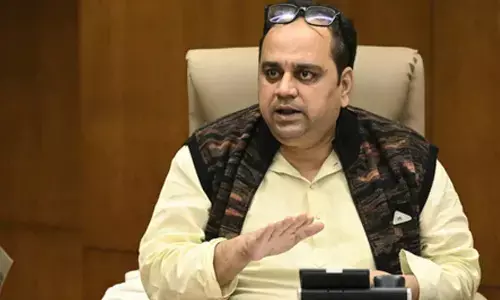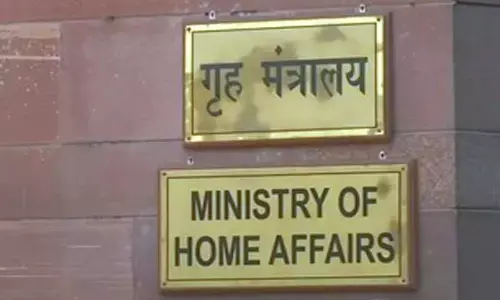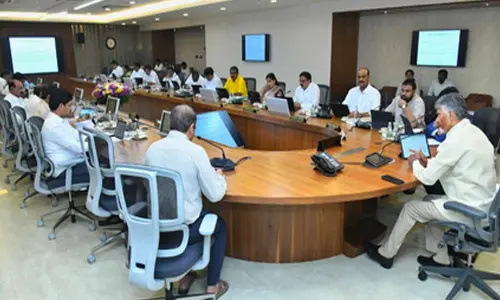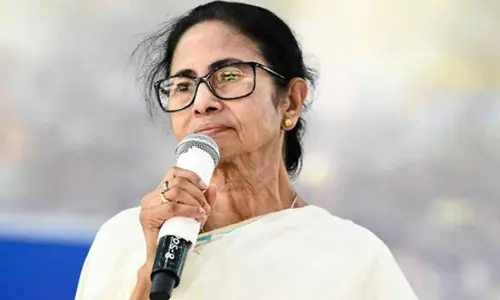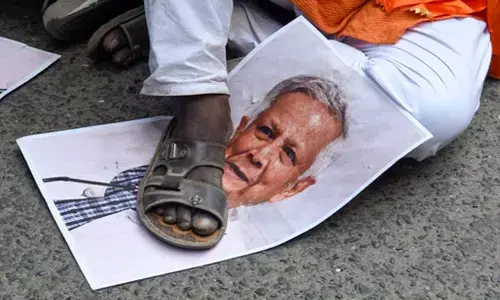The shifting sands in Nandyal
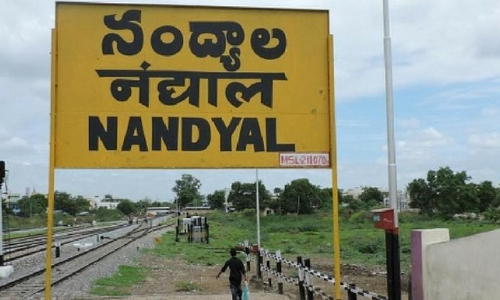
Normally, by-elections that too at a time when the ruling party is in a completely comfortable position should not be a cause of any political anxiety. But, the Nandyalby-elections would certainly be a source of political speculation on the things to come in the run-upto the 2019 polls.
Normally, by-elections that too at a time when the ruling party is in a completely comfortable position should not be a cause of any political anxiety. But, the Nandyalby-elections would certainly be a source of political speculation on the things to come in the run-upto the 2019 polls.
Though a couple of by-elections were held subsequent tothe 2014 GeneralElections, the Nandyalbypoll, necessitated by the sudden demise of Bhuma Nagi Reddy who won on YSR Congress ticket and later defected to TDP,ishappening relatively not far from the next General Elections.The earlier by-polls caused due to death of the sitting legislators did not witness any real contest whereas the two warring political parties in the state –YSR Congress and TDP – are engaged in a do-or-die battle now.
The political pointers emerging from the electoral landscape of Nandyalcertainlyare a reflection of the prevailing political situation in the state. To that extent, Nandyal can be the microcosm of the current political context in the state.
The significant characteristic of the political situation emerging from the ground is that the government led by NChandrababu Naidu seems to be still enjoying a comfortable pro-incumbency. The sporadic discontent among certain sections of society is yet to galvanise into any formidable anti-incumbency against the TDP government.
Meanwhile, the failure of the YSR Congress party torally the people disgruntled with the TDP government is a classic factor for this situation. The half-hearted implementation of the loan waiver, the unfulfilled promise of unemployment allowance, the unremunerative prices for the peasantry, the lapses in distribution of pensions, ration cards and technological deficiencies plaguing the public distribution system, etc., are some of the issues on which the TDP government is caught on the wrong side, much to the comfort of the major opposition YSR Congress.
But, instead of focusing on such concrete issues that cause disenchantment among certain sections, the YSR Congress, especially its leader‘sobsession with Chandrababu Naidu, is turning out into an advantage for the ruling party. The YSR Congress is still under an illusion that power is round the corner for the party and fails to acknowledge the fact that the Chief Minister still enjoys popular mandate even after three years of rule.
The political situation in the state hasnot undergone any qualitative change as compared to 2014 to effect achange in the correlation of political forces. A visittoNandyal would reveal these perceptible political pointers.
Despite the YSR Congress Halla Bol over the political defections, this seems to be cutting no ice with the electorate who are cynical of such a political culture as the opposition YSR Congress is not refreshingly different when it comes to this decadent political value system.
Nandyal constituency has a sizable Muslim voting. But, the TDP‘s alliance with BJP seems to be no liability for TDP. The YSR Congress is hobnobbing with the BJP, thus incapacitating itself from waging any serious secular battle on this aspect.
The mood of the Muslim voter in Andhra Pradesh is remarkably different from that in the other parts of the country. Andhra Pradesh has no history of large-scale communalconflagration. The religious identity of minorities subsumes into the linguistic identity. This demographicand socialdimension,perhaps, is the important reason for any aversion towards TDP for its political understanding with BJP.
In 2014, Chandrababu Naidu engineered a successful social coalition. He tried to rally behind all those social formations which were unconnected with the YSRCP. The Kapus account for a sizable segment. The TDP could attract the Kapu electorate by assuring them of reservations among other benefits.
There is an ongoing agitation for fulfillment of this electoral promise. There is also discontent especially among Kapu youth. But, interaction with many voters in Nandyal reveals that YSR Congress party has miserably failed to encash on this. However, Malas who also constitute a significant proportion of the electorate in this constituency seems to be still largely rallying behind YSR Congress as it was in 2014. But, the TDP retains a lead among Madigas who are relatively less in population compared to the Malas.
In 2014, the extreme political polarisation between TDP and YSR Congress has helped TDP to consolidate its vote share. Sucha political polarisation at a time when there is no strong anti-incumbency is a positive factor for the TDP in this by-poll too. The Congress has not revived and no other party has any presence in this constituency thus making the contest bipolar. This too represents the macro-political picture prevailing in the state at present.
The TDP in 2014 has also immensely benefited from carefully orchestrated campaign that the state is in a helpless positionpost-bifurcation. The ruling party continues to nurture sucha feeling, creating a positive vote for the party.
However, certain local factors have the potential to upset TDP apple cart. The unprecedented focus on Amaravati as harbinger of new AndhraPradesh is creating a feelingof alienation inRayalaseemawhich was also evident from the defeat of TDP in the elections to the legislative council recently. Besides, the social composition of Rayalaseema is also a favorable factor for the YSR Congress.
The Reddy community continues to enjoy formidable influence in the villages. This community is still largelyrallying behind YSR Congress. But, as the fight is primarily between the twoleaders belonging to same community this factor obviously gets diluted.
The local specific factors of Nandyal in particular and Rayalaseema politics in general can give anxious moments for the TDP. The Rayalaseema politics is known for faction loyalties rather than political affinities. Moreso, the Nandyal polity is historically dominated by Silpa and Bhuma families. It’s a strange paradox that the leaders have shifted political loyalties to contest against each other.
The electorate is also evenly divided between party and personal loyalties making this contest much more interesting.The TDP has pressed into service developmental politics. The ruling party is trying hard to lure voters by initiating a slew of developmental and welfare measures in the constituency like housing and road widening projects.
In the recent electoral history of India, such developmental politics has shown its decisive impact on the mood of the voter unless there is a discernible and strongpoliticalwind. No such political trend is yet visible.
No electoral outcome is dependent on a single factor. No by-election can be considered as a referendum on the performance of the government though winning side wishes to claim so.
The people’s perception of governance, the age-old political affinities, the personal loyalties, the emotional factors, the relative strengths and weaknesses of the contending candidates, the caste calculus etc., are expected to define the mandate 2017.
Woman injured in stabbing attack in Tokyo, suspect at large
Bengal cop booked for murder over mysterious death of woman home guard, SIT to probe case
Staffer recalls horror of 7-kg gold robbery by armed gang in Karnataka’s Hunsur
25-Year-Old Airline Cabin Crew Member Dies At Gurugram Party; Police Begin Investigation









